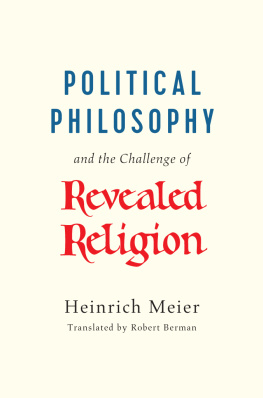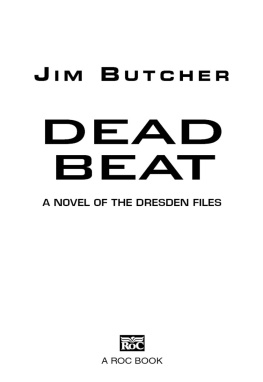The Score, the Orchestra, and the Conductor
The Score, the Orchestra, and the Conductor
GUSTAV MEIER


Oxford university press, Inc., publishes works that further
Oxford Universitys objective of excellence
in research, scholarship, and education.
Oxford New York
Auckland Cape Town Dar es Salaam Hong Kong Karachi
Kuala Lumpur Madrid Melbourne Mexico City Nairobi
New Delhi Shanghai Taipei Toronto
With offices in
Argentina Austria Brazil Chile Czech Republic France Greece
Guatemala Hungary Italy Japan Poland Portugal Singapore
South Korea Switzerland Thailand Turkey Ukraine Vietnam
Copyright 2009 by Gustav Meier
Published by Oxford University Press, Inc.
198 Madison Avenue, New York, New York 10016
www.oup.com
Oxford is a registered trademark of Oxford University Press.
All rights reserved. No part of this publication may be reproduced,
stored in a retrieval system, or transmitted, in any form or by any means,
electronic, mechanical, photocopying, recording, or otherwise,
without the prior permission of Oxford University Press.
Library of Congress Cataloging-in-Publication Data
Meier, Gustav, 1929
The score, the orchestra, and the conductor/Gustav Meier.
p. cm.
Includes bibliographical references and index.
ISBN 978-0-19-532635-2; 978-0-19-532636-9 (pbk.)
1. Conducting. 2. Orchestral musicInterpretation (Phrasing, dynamics, etc.)
I. Title.
MT85.M337 2009
781.45dc22 2008027044
9 8 7 6 5 4 3 2 1
Printed in the United States of America
on acid-free paper
FOR EMY
With love and appreciation I dedicate this book
to Emy, my wife and best friend, who made
it possible for the book to become a reality.
CONTENTS
The Score, the Orchestra, and the Conductor
INTRODUCTION
One man or woman stands in front of 100 fellow human beingsunlike them, without the capacity to make soundand yet has the power to shape the great works of sonic art. The conductors eyes dart about, seemingly all-seeing, ears all-hearing, a musical intelligence called upon to grasp a works architecture and then convey it. He or she is curator of masterpieces, incubator of new works and public performer.New York Times, Daniel J. Wakin
Singers and instrumentalists are able to look at a musical work and transform it immediately into musical sound. Aural and physical feedback allows them to discover technical and musical problems early on and begin at once to work on solutions. In contrast, conductors spend the majority of their preparation time for a performance without access to their instrument, the orchestra. Their musical and technical experimentation occurs in a vacuum. Conductors lack an opportunity to predict ensemble problems, experiment with tools of communication, or test their effectiveness in forming musical ideas prior to the first orchestra rehearsal.
The score provides all the information needed to form a musical interpretation of a composition; however, a conductor must be able to read and understand the score; know the various clefs; be familiar with transposing instruments; imagine sound, colors and textures; develop a deep and true musical concept; and decide how to communicate and lead most effectively through physical gestures.
Generally the orchestra plays the score together only a few days before an audience hears the performance. In addition, rehearsal time is limited, and frequently musicians have at best only a few opportunities to rehearse their parts together. Conductors must be aware that, from the first rehearsal, orchestra members expect a musical framework within which the composition will be performed and a consistent set of physical signals.
All of this requires intense preparation. Depending on the particular demands of each score and the conductors training, different methods or even fundamentally different techniques may be used. This text is a practical approach to the conductors preparation of a score for performance; it categorizes and illuminates the essential tools of the conductors craft. I hope it will help conductors gain the knowledge and confidence needed to step on the podium.
Since beginning my teaching at Yale University, I have wanted to write a book about the conductors craft. I have had the great privilege of long association with fine teachers, wonderful colleagues, and dedicated orchestra musicians, singers, and soloists. The many excellent conductors who have participated in my classes and seminars have taught me firsthand what leading an orchestra is all about. In this book I try to relate what I have learned: how to listen to music, read a score, connect to the composers thought and emotion, and share the transcendent beauty of music with listeners.
Often I am asked what a person needs in order to become a fine conductor. I can offer a few suggestions: study an instrument and listen to music as early in life as possible, learn all you can about music and composers, study with a fine teacher, become educated in languages and the humanities, observe other conductors, harness energy for hard work, cultivate patience to work long hours alone without an instrument, and garner strength to deal with the inevitable rejections. The lifelong company of other musicians is a wonderful bonus.
The most frustrating part of my experience as a conducting teacher has been the need to limit the size of my classes and workshops. I dislike having to choose only a few participants from a number of sincere and talented conductors. Many have been disappointed, and some wonderful conductors may not have been given the opportunities they deserved. For this I am truly sorry.
Being a conducting teacher is always interesting and exciting; the students and the music are constantly stimulating. I look forward to every class and seminar, and I am very proud of my students. Fate doesnt always bring what each person deserves, but their lives are enhanced by association with this great art. My best wishes and affection go out to all of you whom Ive had the privilege to teach.
CHAPTER ONE
The Beat
INTRODUCTION
A performance, whether a violin sonata, piano quintet, or any other ensemble, succeeds only if the players have worked out a system of communication among themselves. Rehearsals help to resolve ensemble challenges, but without designated signals, the musicians cannot effectively monitor the musical flow of a composition. The players need flexibility during performances to make spontaneous changes. Proper signaling allows this and prevents disruption in the music or actual breakdowns.
In ensemble playing, a leader from within the group uses physical signals to guide the others. The signals are transmitted with the head, eyes, arms, hands, breath, an instrument, or a combination of them. All signals are gestures that anticipate forthcoming musical happenings. Some indicate when to start or end a work, while others show when to retain, change, monitor, or set up a tempo. Signals give cues or cutoffs and show when to hold or end a fermata. The leader in traditional chamber groups is usually the player of the highest-pitched instrument: the first violin in a string quartet, the flutist in a woodwind quintet, or the first trumpeter in a brass quintet. In a mixed ensemble, the player whose part has priority from a compositional point of view takes over the leadership.
Next page



















